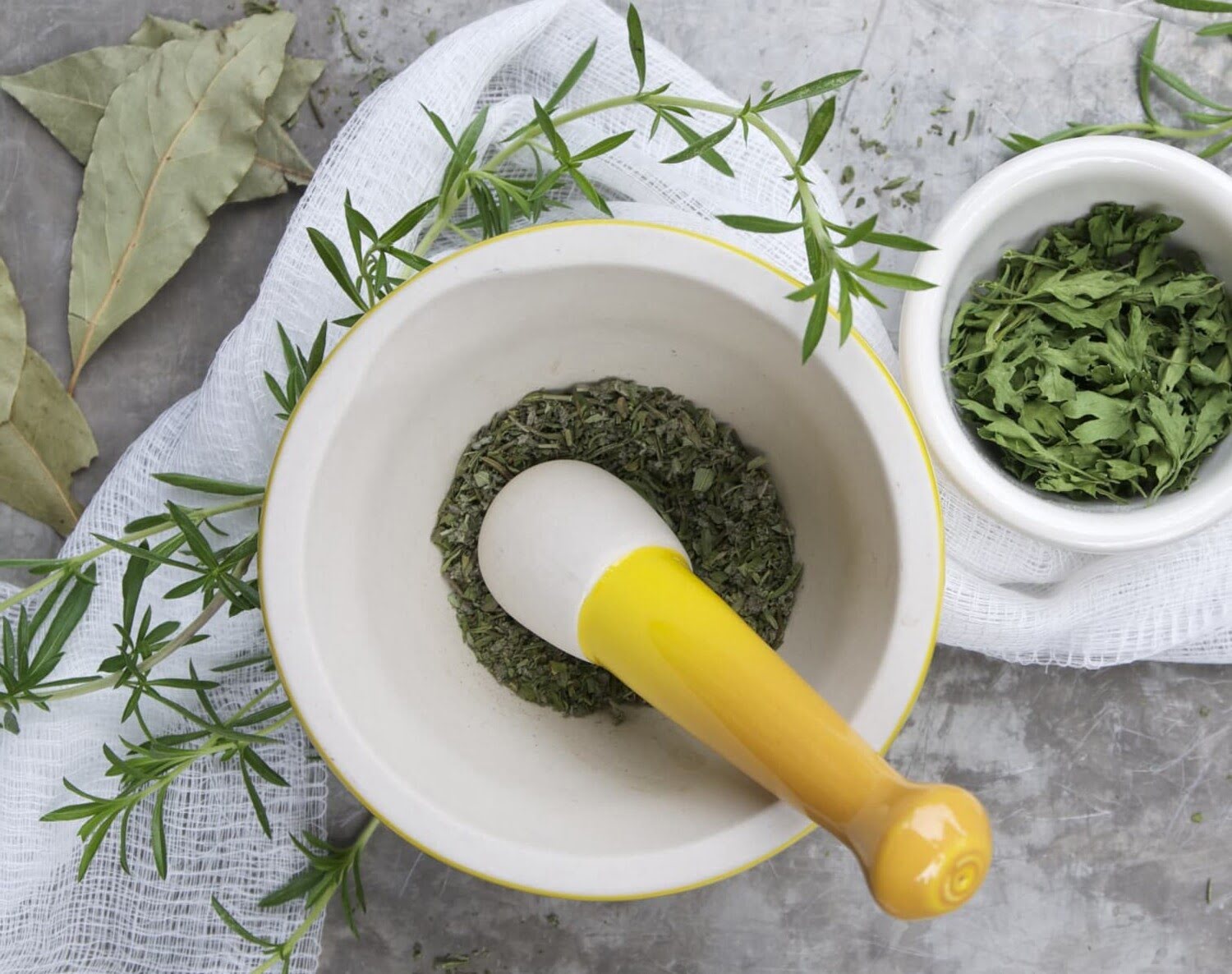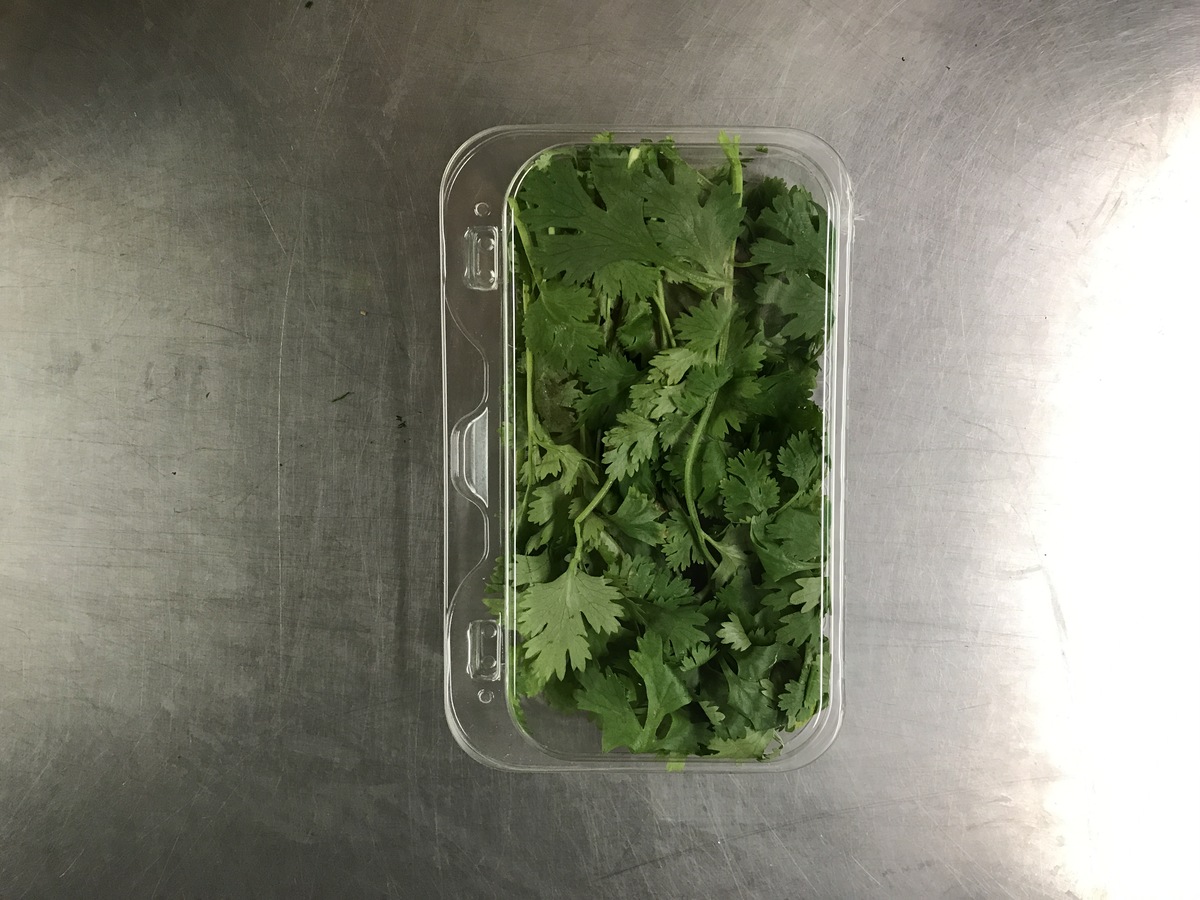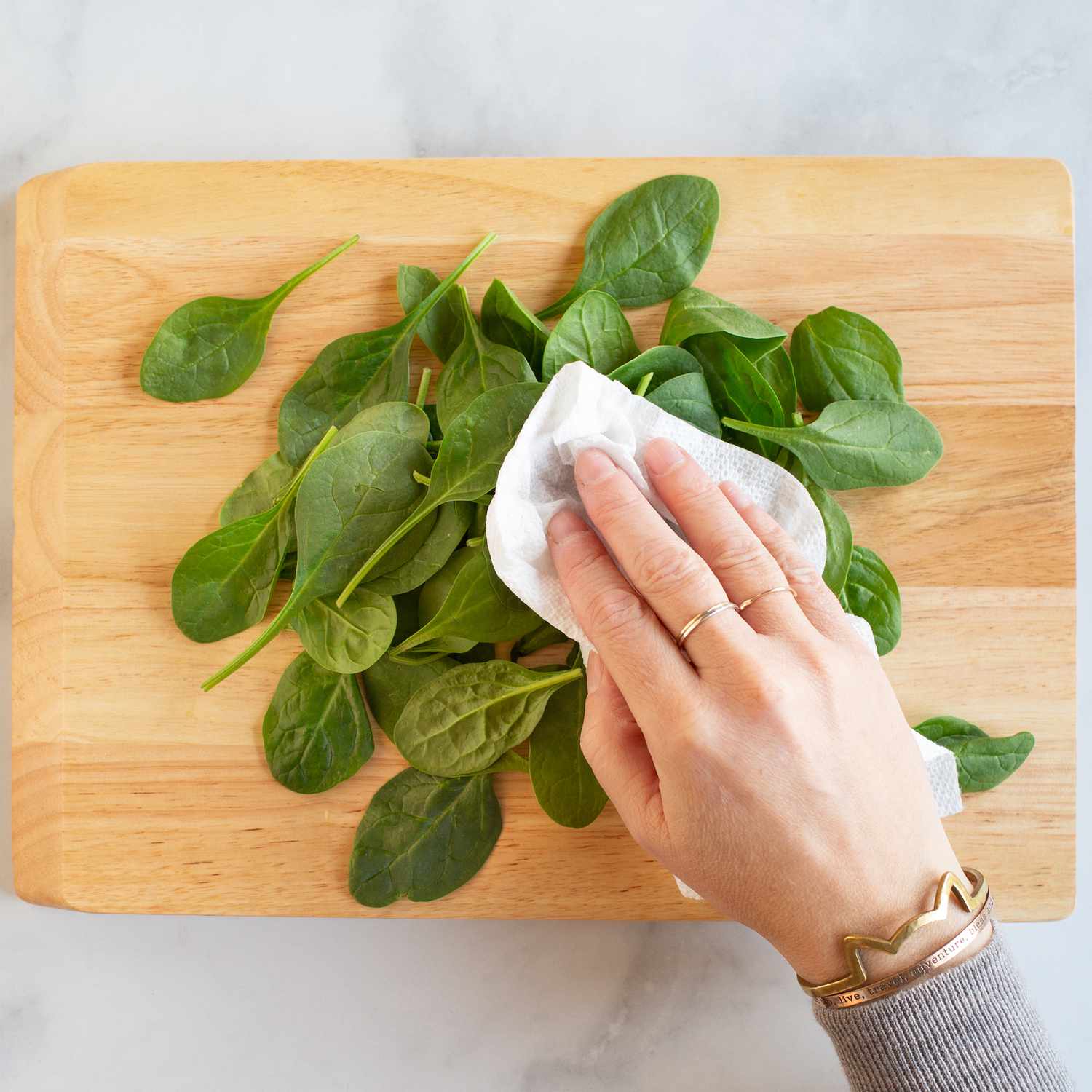

Articles
How To Store Dried Mint Leaves
Modified: December 7, 2023
Learn the best way to store dried mint leaves with this helpful article. Keep your dried herbs fresh and flavorful for long-lasting use.
(Many of the links in this article redirect to a specific reviewed product. Your purchase of these products through affiliate links helps to generate commission for Storables.com, at no extra cost. Learn more)
Introduction
Welcome to the world of dried mint leaves! Whether you grow your own mint plant or purchase a bunch from the store, drying mint leaves allows you to enjoy their refreshing flavor and aroma long after the growing season ends. Proper storage is essential to retain the potency and freshness of the dried leaves, ensuring they can be used in a variety of culinary dishes and herbal remedies.
In this article, we will guide you through the process of choosing and preparing dried mint leaves, as well as the best storage containers and conditions to maintain their flavor and quality. We’ll also provide some helpful tips on how to use your stored dried mint leaves effectively.
So, let’s dive in and discover how to store dried mint leaves so you can savor their delightful taste and fragrance whenever your recipes call for this versatile herb.
Key Takeaways:
- Properly storing dried mint leaves is crucial for preserving their flavor and aroma. Choose high-quality leaves, use airtight glass jars, and maintain ideal storage conditions to ensure freshness and potency.
- Get creative with your stored dried mint leaves! Use them in culinary dishes, teas, lemonades, baking, and herbal remedies. Remember to periodically check for freshness and enjoy their refreshing flavor year-round.
Read more: How To Store Mint Leaves
Choosing and Preparing Dried Mint Leaves
When it comes to choosing dried mint leaves, it’s important to focus on quality. Look for leaves that are vibrant green, fragrant, and free from any signs of mold or discoloration. Avoid leaves that appear brown or overly brittle, as these may have lost much of their flavor and potency.
If you’ve grown and dried your own mint leaves, make sure they have been thoroughly dried before storing. Air drying is the most common method, where you bundle the stems together and hang them in a cool, dry place away from direct sunlight. Once the leaves are completely dry, carefully remove them from the stems and discard any discolored or damaged leaves.
Alternatively, if you choose to purchase dried mint leaves, ensure that they come from a reputable source and are labeled as food-grade. This ensures that the leaves have been dried and processed with the utmost care and are safe for culinary use.
Before storing dried mint leaves, it’s important to prepare them properly. Crush the leaves gently between your fingers or use a mortar and pestle to break them into smaller pieces. This will help release their essential oils and enhance the flavor when used in your recipes.
Keep in mind that dried mint leaves have a more concentrated flavor compared to fresh mint leaves. As you prepare your dishes, remember to use them sparingly and adjust the quantity to suit your taste preferences.
Proper Storage Containers for Dried Mint Leaves
Choosing the right storage container for your dried mint leaves is crucial to ensure their freshness and longevity. Opt for airtight containers that can protect the leaves from exposure to air, moisture, and sunlight.
Glass jars with tight-fitting lids are an excellent option for storing dried mint leaves. They are not only transparent, allowing you to easily see the leaves inside, but they also provide a secure seal to keep the leaves protected and aromatic. Mason jars or spice jars with rubber gaskets are perfect for this purpose.
Avoid using plastic containers for storing dried mint leaves, as they can be more porous and may not provide the necessary protection from air and moisture. Instead, reserve plastic containers for short-term storage like freezer bags if you plan to freeze the mint leaves.
Additionally, make sure your chosen storage container is clean and dry before adding the dried mint leaves. Any moisture or residue from previous contents can compromise the flavor and quality of the leaves.
Consider dividing your dried mint leaves into smaller portions before storing them. This allows you to use only what you need while keeping the rest sealed and protected. Small glass jars or resealable bags are useful for portioning out the dried leaves.
Lastly, label your storage containers with the date of storage. This helps you keep track of the freshness of the dried mint leaves and rotation in your pantry or spice collection.
Ideal Storage Conditions for Dried Mint Leaves
Creating the ideal storage conditions for dried mint leaves is essential to preserve their flavor, aroma, and overall quality. Here are some tips to help you maintain optimal storage conditions:
- Temperature: Dried mint leaves should be stored in a cool and dry environment. Excessive heat can cause the leaves to lose their flavor and potency. Aim for a temperature range of 50-70 degrees Fahrenheit (10-21 degrees Celsius).
- Humidity: Moisture is the enemy of dried mint leaves. High humidity can lead to mold growth and deterioration of the leaves. Avoid storing them in areas of high humidity, such as the kitchen near the stove or sink. Instead, opt for a dry pantry or cupboard.
- Light: Dried mint leaves should be kept away from direct sunlight. Exposure to light can cause the leaves to fade in color and degrade in quality. Choose a dark storage location or use opaque containers to shield the leaves from light.
- Avoidance of Strong Odors: Mint leaves are highly fragrant and can absorb odors from their surroundings. Keep your dried mint leaves away from strong-smelling substances like spices, onions, or cleaning chemicals to prevent them from absorbing unwanted flavors.
By ensuring the right storage conditions, you can extend the shelf life of your dried mint leaves and keep them fresh for an extended period.
Store dried mint leaves in an airtight container, away from direct sunlight and heat. This will help preserve their flavor and aroma for a longer period of time.
Tips for Maintaining Flavor and Quality
To maintain the flavor and quality of your dried mint leaves, consider the following tips:
- Storage Duration: While dried mint leaves can be stored for an extended period, it’s best to use them within a year for optimal flavor. Over time, the leaves may lose some of their potency and flavor, so it’s a good practice to rotate your stock regularly.
- Avoid Grinding in Advance: To preserve the freshness of the dried mint leaves, it’s best to crush or grind them right before use. This ensures that the essential oils and flavors are released at their maximum potential.
- Keep Leaves Whole: If you prefer to use the dried mint leaves whole, refrain from crushing or grinding them until you are ready to use them in your recipes. This helps retain their flavor and aroma until they are needed.
- Airtight Seal: Ensure that the storage container is tightly sealed after each use to prevent air and moisture from entering. This will help maintain the freshness of the dried mint leaves for a longer period.
- Avoid Heat Exposure: Store your dried mint leaves away from heat sources like the stove, oven, or other appliances. Heat can dry out the leaves further and diminish their flavor.
- Inspect for Mold: Regularly check your stored dried mint leaves for any signs of mold or moisture. Even a small amount of mold can contaminate the entire batch, so promptly remove any affected leaves and transfer the remaining ones to a clean container.
By following these tips, you can ensure that your dried mint leaves retain their flavor, aroma, and overall quality, allowing you to enjoy them in various culinary creations.
Read more: How To Store Mint Leaves In Fridge
Using Stored Dried Mint Leaves
Now that you have properly stored your dried mint leaves, you can easily incorporate them into your cooking and other applications. Here are some ideas for using your stored dried mint leaves:
- Culinary Uses: Add dried mint leaves to your favorite recipes for a burst of refreshing flavor. They are commonly used in Middle Eastern, Mediterranean, and Indian cuisines. Crush a small amount of dried mint leaves and sprinkle them over salads, roasted vegetables, meats, or soups. They can also be used to infuse flavor into marinades, dressings, and sauces.
- Tea and Infusions: Dried mint leaves make a delightful herbal tea. Simply steep a teaspoon or so of dried mint leaves in hot water for a few minutes, strain, and enjoy. You can also combine them with other herbs or tea leaves for a customized blend.
- Refreshing Lemonade: Take your homemade lemonade to the next level by adding a pinch of dried mint leaves. The minty twist perfectly complements the tangy citrus flavors.
- Baking: Crushed dried mint leaves can add a unique flavor to baked goods like cookies, cakes, and muffins. Experiment with different recipes to discover the perfect balance of minty goodness.
- Herbal Remedies: Mint leaves are known for their soothing properties. Use dried mint leaves to make a homemade herbal infusion for digestive issues or to soothe a sore throat. Combine them with other herbs like chamomile or ginger for added benefits.
Remember to adjust the quantity of dried mint leaves based on your personal taste preferences. Start with a small amount and add more if desired. It’s always easier to add more flavor than to remove an overpowering one.
It’s important to note that while dried mint leaves have a long shelf life, their flavor and potency may diminish over time. As you use your stored dried mint leaves, taste and smell them to ensure they still provide the desired flavor.
With these various applications, your stored dried mint leaves can be enjoyed in a wide range of dishes, drinks, and herbal remedies, adding a refreshing and aromatic touch.
Conclusion
Properly storing dried mint leaves is essential to preserve their flavor, aroma, and quality. By following the tips outlined in this article, you can ensure that your dried mint leaves remain fresh and potent for an extended period.
Remember to choose high-quality dried mint leaves that are vibrant green and free from any signs of mold or damage. Prepare them by gently crushing or grinding them before use to release their essential oils and enhance their flavor.
When it comes to storage containers, opt for airtight glass jars or other opaque containers to protect the leaves from air, moisture, light, and strong odors. Label your containers with the date of storage to keep track of freshness.
Store your dried mint leaves in a cool, dry, and dark environment. Avoid exposure to heat, humidity, and sunlight, as these can degrade the leaves’ flavor and quality over time.
When it’s time to use your stored dried mint leaves, get creative in the kitchen! Add them to a variety of recipes, such as salads, soups, dressings, marinades, and baked goods, to infuse dishes with a refreshing minty twist. Enjoy them in herbal teas or use them in homemade remedies for their soothing properties.
Remember to periodically check your stored dried mint leaves for any signs of mold or moisture and remove any affected leaves to maintain the overall quality of the batch.
With these storage and usage tips in mind, you can enjoy the delightful taste and aroma of dried mint leaves throughout the year. So go ahead, stock up on freshly dried mint leaves and let their flavor enhance your culinary creations and herbal remedies.
Frequently Asked Questions about How To Store Dried Mint Leaves
Was this page helpful?
At Storables.com, we guarantee accurate and reliable information. Our content, validated by Expert Board Contributors, is crafted following stringent Editorial Policies. We're committed to providing you with well-researched, expert-backed insights for all your informational needs.















0 thoughts on “How To Store Dried Mint Leaves”